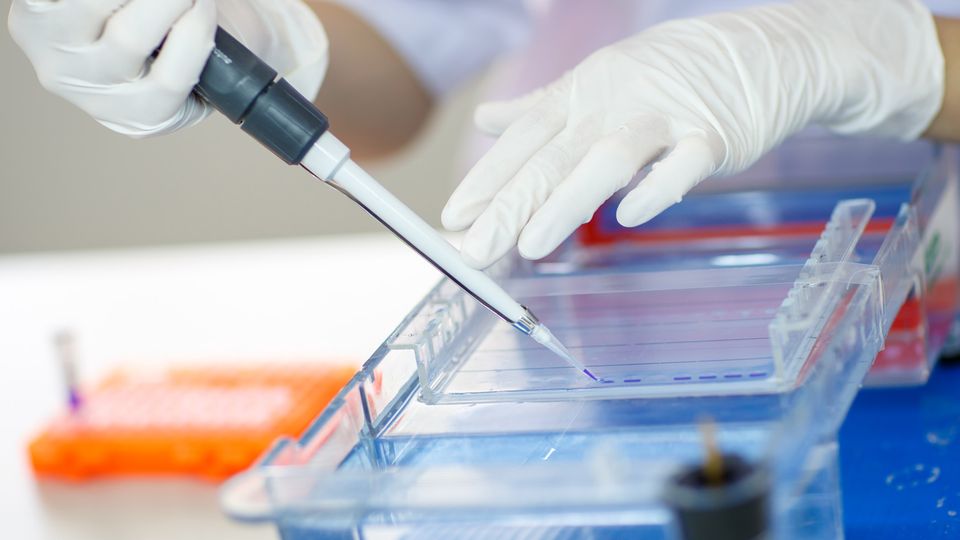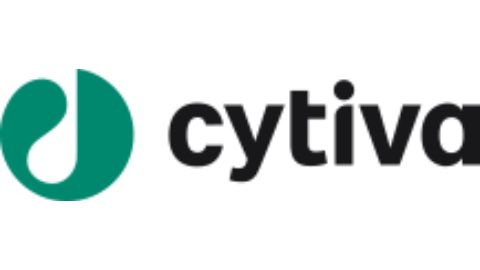How To Achieve High-Quality Western Blots
How To Guide
Published: June 15, 2023
|
Guy Regnard, PhD
Guy Regnard transitioned from academia to become a freelance science/medical writer and consultant in 2019. With a PhD in molecular and cell biology, he has a thirteen-year track record in research and development, where he worked on viruses and vaccines within science and health university faculties.
Learn about our editorial policies

Credit: iStock
Western blotting, or immunoblotting, is an essential tool in any molecular laboratory. This sensitive assay can identify specific antibodies or antigens, having applications in both research and clinical settings. Optimizing each step of the process is crucial to ensure you produce publication-ready western blots.
Download this guide to explore how you can achieve high-quality western blots by:
- Improving protein isolation and sample preparation
- Optimizing your antibodies
- Using controls effectively
1
How To Guide
How To Achieve High-Quality
Western Blots
Guy Regnard, PhD
Western blotting, or immunoblotting, is an essential tool in any molecular laboratory. This sensitive assay
can identify specific antibodies or antigens, having applications in both research and clinical laboratories.1
Western blotting typically uses antibodies to recognize short linear regions of amino acids found in the
denatured protein of interest.2
For example, the assay can identify infection by detecting specific antigens in a patient’s serum; alternatively, it can also detect antibodies produced in response to a disease
or vaccination.
Generally, the first step in western blotting is to denature and separate proteins using sodium dodecyl
sulphate-polyacrylamide gel electrophoresis (SDS-PAGE). After that, these proteins are electrophoretically
transferred onto a membrane. Primary antibodies are used to probe the membrane and bind to target
proteins. Secondary antibodies conjugated to enzymes then bind to the primary antibodies. The final step
involves visualizing the protein band using chromogenic or chemiluminescent substrates that are cleaved
by enzymes, or fluorescence using fluorophores that are attached to the secondary antibody. Optimizing
each step is crucial—this guide summarizes how you can achieve high-quality western blots.
Protein isolation and sample preparation
Throughout the western blotting process, it is crucial to ensure that you use deionized, distilled water. This
is particularly important as any changes in pH can affect the outcome at each stage.3
When isolating your proteins, first check whether the extraction buffer is compatible with western blotting. Extraction buffers that contain high salt (>250 mM) or nonionic detergent (>2%) concentrations
or acidic/basic pH buffers can affect the buffering system of the gel, causing poor protein resolution.4
Endogenous proteinases are the second aspect of protein isolation that can affect western blotting.
Protein extraction from samples often releases endogenous proteinases, which, if left unchecked, can
rapidly degrade your sample. Fortunately, a few extra steps will mitigate their impact. These include adding proteinase inhibitor to the extraction buffer, maintaining samples on ice to reduce proteinase activity
and immediately inactivating proteinases after adding sample buffer by heating samples to 95°C for at
least five minutes.2,3
It is helpful to quantify the protein concentration in each sample using a standard
protein assay. Quantifying protein concentration allows you to dilute or concentrate your samples to prevent overloading or underloading of the SDS-PAGE gel.2
HOW TO ACHIEVE HIGH-QUALITY WESTERN BLOTS 2
How To Guide
Proteins are separated according to size when using SDS-PAGE. This separation relies upon the complete
denaturation of the protein and ensures protein migration and resolution.4
Negatively charged SDS molecules bind the length of the protein, giving the protein a negative charge proportional to its size. Therefore
it is important to add sufficient sample buffer to ensure an excess of SDS, which prevents the inherent
charge of the protein from affecting mobility.2
Your protein samples are now ready for gel electrophoresis.
Separating your proteins
When designing a western blot experiment, ensure that any samples you want to make statistical comparisons are loaded on the same blot. Given the variability between western blots, statistical comparisons
between blots are not advisable.5
Before loading your SDS-PAGE gel, a 2-minute centrifugation at 17 000 × g removes any insoluble material in the sample that can cause streaking within the gel or affect how the samples run.2
Dedicate a lane
on the SDS-PAGE gel to a pre-stained protein standard; this will allow you to monitor the progress of the
gel electrophoresis visually.1
Furthermore, the pre-stained protein standard can indicate whether transfer
of your proteins onto the membranes has occurred during the blotting process. Molecular weight markers
are also an essential control element. In addition to the molecular weight marker, it is important at this
stage to consider incorporating positive and negative controls to electropherize alongside your sample.
These controls will be important during analysis and are discussed in greater detail later in the guide.
Transferring your proteins
Always use gloves when preparing transfers as oils on the hand can interfere with the transfer process.3
Separated proteins can be transferred from the gel onto a membrane using wet or semi-dry blotting
systems. The membranes most commonly used for this purpose are nitrocellulose and polyvinylidene
fluoride (PVDF).4
Before the transfer, allow the gel to equilibrate in the transfer buffer for 30 minutes. This is particularly
important when wet blotting as it prevents the gel from changing in size during the transfer process,
which can cause a blurred transfer pattern. When assembling the transfer, make sure that there are no
air bubbles, as these will block current flow and obstruct protein transfer in that area. For wet blotting,
the best way to minimize air bubbles is to assemble under transfer buffer. With semi-dry blotting, air bubbles can be gently rolled out of the assembly using a clean glass rod. With semi-dry systems, cut the filter
paper to the size of the gel. This ensures the current flows through the gel and does not bypass it through
overlapping filter paper.3
Most proteins are negatively charged in the transfer buffer and will move towards the positive anode
during transfer; however, some can become positively charged. In these instances, placing an additional
membrane on the cathode side of the gel will capture any positively charged proteins, particularly those
of interest. Wet blotting can be helpful, especially when transferring hydrophobic proteins or proteins
greater than 100 kDa, as it allows for prolonged transfer without the risk of buffer depletion. As the
transfer process generates heat, transfers longer than an hour should be cooled to between 10–20°C.
Generally, the buffer temperature should not exceed 45°C, irrespective of transfer time. Once the protein
transfer is complete, reversible Ponceau S staining can visualize the success of the transfer onto the
membrane before the blocking step.3
HOW TO ACHIEVE HIGH-QUALITY WESTERN BLOTS 3
How To Guide
Blocking is essential to prevent the primary antibody from binding non-specifically to the membrane
resulting in a background signal during the detection step. Nitrocellulose membrane has a particularly
high protein-binding affinity. The membrane can be blocked using a buffer containing reagents such as
bovine serum albumin (BSA), gelatin, casein, nonfat dry milk and Tween 20. Blocking reduces the background signal during detection, thereby enhancing assay sensitivity.1
Some primary antibodies, particularly those raised in goats, can cross-react with proteins found in milk. If so, switch to an alternative
blocking reagent to reduce the background.4
Optimizing your antibodies
It is important to note that antibodies that recognize epitopes based on tertiary conformation may not bind
or react weakly to denatured proteins bound to the membrane.1
If identifying tertiary structure is required,
non-denaturing conditions can be used during gel electrophoresis; however, this will impact the mobility
of the proteins.
The optimal primary and secondary antibody concentrations should produce a low background and high
specificity. These concentrations can be determined empirically using a dilution series with membrane
strips.3,4
Additional protein bands, aside from the protein of interest, can often be detected when using
polyclonal antibodies as the primary antibody. These are the result of contaminating antibodies present in
the polyclonal antibody solution. Performing an analogous adsorption step before using the primary antibody can help remove contaminating antibodies.4
For example, an immune serum that detects a recombinant vaccine antigen made using a microbial expression system may detect multiple protein bands on
a western blot. Preincubating the immune serum with a membrane coated in protein isolated from the
microbial system can remove contaminating antibodies from the primary antibody incubation step.
Nonspecific binding of the primary or secondary antibody can cause high background. To determine
whether the problem exists with the primary antibody, controls using pre-immune serum or only the
secondary antibody can be tested. If the primary antibody is the cause of the high background, changing
the protein-blocking agent or lowering the primary antibody concentration can reduce the background
and increase specificity.3
Once the primary and secondary antibodies are bound, the protein bands can
be visualized.
Detecting your proteins
Protein can be visualized using chromogenic and chemiluminescent substrates or fluorescence using
a fluorophore. The most cost-effective methods involve chromogenic substrates, which produce an
insoluble precipitate on the target protein band upon cleavage by horseradish peroxidase or alkaline
phosphatase-conjugated to the secondary antibody. Luminescent substrates can be used to improve
the sensitivity of these conjugated secondary antibodies. Furthermore, using avidin-biotin coupling to a
biotinylated secondary antibody can achieve extremely high sensitivity as multiple enzymes are attached
to each antibody.3
An essential aspect of chromogenic substrates is that the reaction must be stopped to avoid background
development and signal saturation.4,5
It is helpful to keep this development period constant over experiments and projects. A constant development time can allow for the early detection of problems with
substrate and secondary antibodies routinely used in the laboratory.
HOW TO ACHIEVE HIGH-QUALITY WESTERN BLOTS 4
How To Guide
As with optimizing antibodies, the linear detection range is empirically determined. This is especially
important when performing quantitative analysis of western blots to ensure the signal generated by
the conjugated enzyme is proportional to the protein concentration.6
Regarding analysis, it is essential
to discuss all immune-positive protein bands. State reasons behind excluding any protein band from
the analysis.5
Controls, controls, controls
Controls are crucial when performing western blotting, not only to confirm the success of the blot but
also to support the conclusions reached based on the results obtained.5
For example, suppose you want
to detect a protein in a heterogeneous mixture of proteins. In that case, dedicating lanes of the SDS-PAGE
gel for both positive and negative protein controls is helpful. A positive protein control will enable you to
confirm that the western blotting has succeeded and that the primary and secondary antibodies are functional. A negative protein control will indicate any nonspecific binding of the primary antibody to proteins
other than the target or whether the protein target is present irrespective of the experimental conditions.
An additional control to consider is excluding the primary antibody from the assay. Excluding the primary
antibody will indicate whether the secondary antibody non-specifically binds to the membrane or protein
bands. Controls should also include pre-immune sera.5
When quantifying bands, including a loading control will ensure that observed differences in protein band
intensity are not due to differences in loading volume or total protein between samples. A helpful checklist detailing controls is available here.
5
Conclusion
Given the scope for detecting proteins and their sizes, the above steps will undoubtedly assist you and
your lab in producing publication-ready western blots.
Sponsored by:
HOW TO ACHIEVE HIGH-QUALITY WESTERN BLOTS 5
How To Guide
References
1. Sam-Yellowe TY. Exercise 13: Immunoblotting (western blotting). In: Immunology: Overview and Laboratory Manual. Springer. Published online 2021:335-341. doi: 10.1007/978-3-030-64686-8_37
2. Kurien BT. Western Blotting for the Non-Expert. Springer; 2021. doi: 10.1007/978-3-030-70684-5
3. Gallagher S, Winston SE, Fuller SA, Hurrell JG. Immunoblotting and immunodetection. Curr Protoc Cell Biol. 2011;52(1):6-2.
doi: 10.1002/0471143030.cb0602s52
4. Litovchick L. Immunoblotting. In: Greenfield EA ed. Cold Spring Harbor Protocols. Cold Spring Harbor Laboratory Press.
2020;2020(6):pdb-top098392. doi: 10.1101/pdb.top098392
5. Alexander SP, Roberts RE, Broughton BR, et al. Goals and practicalities of immunoblotting and immunohistochemistry: A
guide for submission to the British Journal of Pharmacology. Br J Pharmacol. 2018;175(3):407. doi: 10.1111/bph.14112
6. Pillai-Kastoori L, Schutz-Geschwender AR, Harford JA. A systematic approach to quantitative western blot analysis. Anal
Biochem. 2020;593:113608. doi:10.1016/j.ab.2020.113608
Sponsored by

Download the How To Guide for FREE Now!
Information you provide will be shared with the sponsors for this content. Technology Networks or its sponsors may contact you to offer you content or products based on your interest in this topic. You may opt-out at any time.


